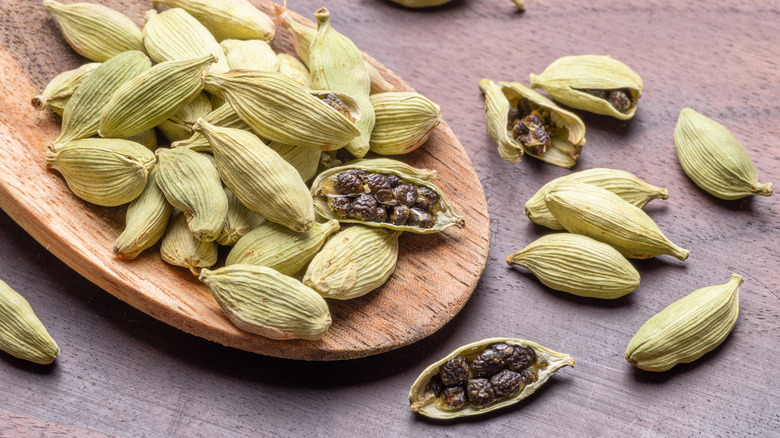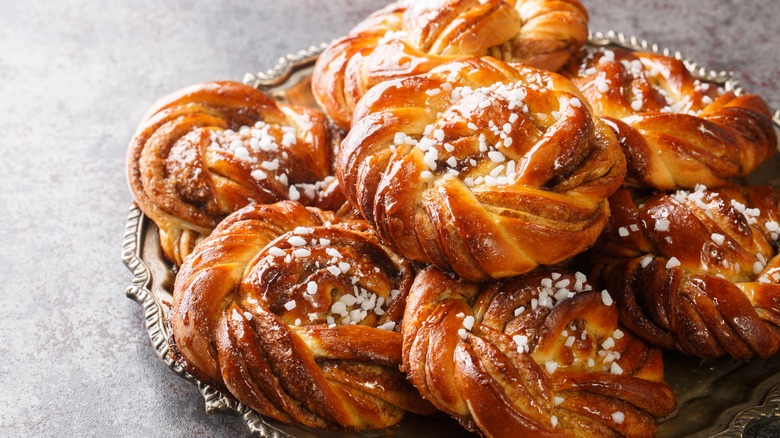How Indian Cardamom Became A Scandinavian Staple Spice
We may receive a commission on purchases made from links.
Often called the queen of spices, Scandinavians have a special love for cardamom. Its distinctive flavor is a key ingredient in the region's baked goods, including cakes, buns, sweet breads, and cookies. But how did this warm spice, native to India, make its way to the faraway Northern European region and become a staple of its cuisine?
Cardamom's journey to Scandinavia took place hundreds of years ago, but no one is entirely sure how it arrived. A leading theory credits the Vikings. According to this version, the Vikings were introduced to the spice in 11th-century Constantinople — modern-day Istanbul, Turkey — then a bustling trading center between Asia and Europe, and brought it back home to Scandinavia.
However, culinary archaeologist Daniel Serra argues in his book, "An Early Meal: A Viking Age Cookbook & Culinary Odyssey," that the evidence suggests cardamom reached Scandinavia via trade routes from the Moors of Spain and Portugal. He points to the first Scandinavian mention of cardamom in a 13th-century cookbook, featuring recipes almost identical to those of the Moors from that era. Regardless of its path, cardamom appealed to the Scandinavian palate, and its use became more widespread in Denmark, Norway, and Sweden as centuries passed and it became more accessible.
How Scandinavians enjoy cardamom
Cardamom comes from the seed-containing pods of a plant in the ginger family. The dried pods can be sold whole, or just the black and brown seeds can be sold whole or ground into powder. Green cardamom, the more common type in Scandinavia, has a strong, complex taste with floral, sweet, citrus, and menthol notes. Black cardamom, dried over a wood fire, has a more powerful and smoky flavor, and is traditionally used in savory Indian dishes.
Among the many Scandinavian baked goods enhanced by cardamom are soft, sweet, and buttery Swedish cardamom buns. The twisted and knotted kardemummabullar are so beloved in Sweden that Cardamom Bun Day is celebrated on May 15th. Norway has its own version of cardamom buns called hveteboller, as well as julekake, a cardamom-scented Christmas sweet bread studded with raisins and candied fruit. In Denmark, fastelavnsboller are soft round buns made from a cardamom dough and filled with cream or fruit jam, traditionally eaten during Lent. Denmark also features twisted buns flavored with cinnamon and cardamom, known as kanelsnurre.
Cardamom isn't limited to baked desserts in Scandinavian cuisine. It also enhances other dishes, such as perfuming rice pudding — best made creamy and al dente with basmati rice — boosting pickling and poaching liquids, and spicing up the traditional mulled wine glögg.


